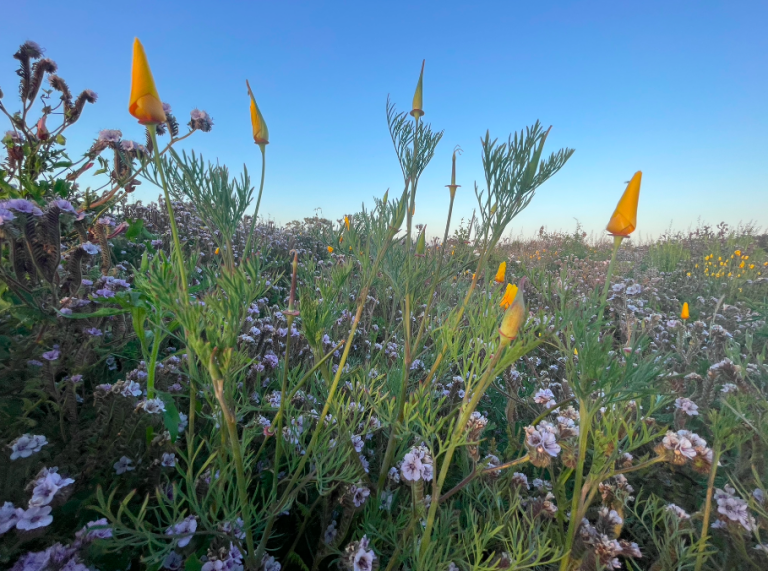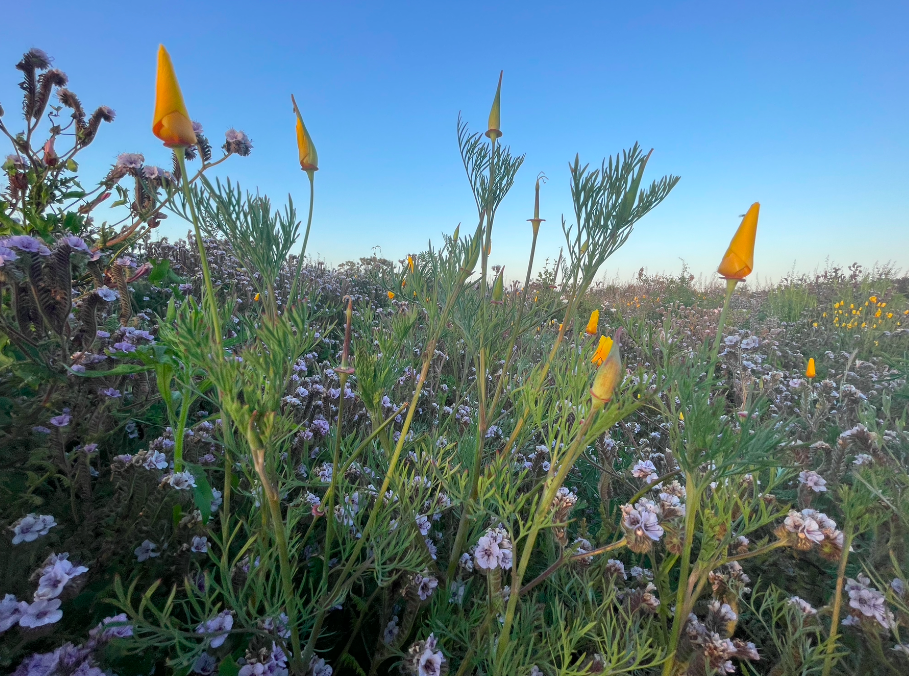
April Zhang
Staff Writer
Last month, pictures of blossoming fields bloomed all over social media. After a hefty rain season, Californians rejoiced over the colorful petals and lively plants spewing color all over the mountains of the state. However, closer studies on the scenery have sparked debate on whether or not this year can be truly classified as a super bloom.

Colloquially defined as “a wonderful natural phenomenon where many annual wildflowers all bloom simultaneously,” a super bloom typically takes place after several dry years, followed by a wet year. The droughts stop the annual wildflowers from germinating and the dormant seeds accumulate in the seed bank until a miraculous rainy season lifts the curse. After three record-dry years, California was hit with an unforgettable season of precipitation — more than six times the regular rainfall level — this past winter. The conditions make for the perfect storm: the invasive grass seeds have significantly reduced through the droughts, and the rain created the perfect opportunity for native plants to thrive on a now-clear landscape.
When Southern California was plagued by the non-stop outpour and mountain-range snowpacks, news sources made it seem ridiculous to doubt the upcoming super bloom that is bound to happen. Now in May 2023, it is clear that the super bloom is nothing compared to the extent of the 2019 super bloom. In fact, many large patches of yellow this year turned out to be species that look similar to — but are not — poppies, the signature of the California super bloom, further discrediting the supposed super bloom.
Regardless of whether this is a real super bloom or not, Southern California has seen a dramatic increase in visitors at mainly natural viewpoints. Since super blooms are a rare natural phenomenon, they are difficult to manage.
Close to the campus of UC Santa Barbara, thousands of visitors flocked to Figueroa Mountain and the Carrizo Plain National Monument. High foot traffic and visitor count can easily overwhelm management agencies, whose resources are often highly limited. Without mindful practices while visiting the wildflower patches, visitors could compact the soil and trample the flowers before they were able to produce seeds, therefore highly impacting the ecological health, as well as the likelihood and extent of future super blooms.
To ensure the sustainability of super bloom enjoyment, some recommended large-scale strategies include limiting visitors, creating a paid reservation system, and establishing interpretive programs run by seasonal staff. Another way to reduce human impacts could be developing a rotation of fields designated for photographers’ activities for each superbloom. Like many other methods, this will warrant time, money, and careful planning, but makes for a necessary and sufficient strategy to sustain the blooms, particularly in highly trafficked areas.
On an individual level, super bloom visitors are encouraged to hike on paved trails, as high foot traffic in the same areas will likely destroy the flowers and deplete the seed bank. It is also important to practice the Leave No Trace principle and make sure to pick up any trash that might be left behind by others. Due diligence is important to sustain any natural environment with human activities. When hiking and/or photographing, one should be mindful of where they are stepping on, so as to not sacrifice the wildflower bloom for the captured moments.
Super bloom or not, the environmental science and ecology community has gathered around the blooming wildflowers all across Southern California. Let this be a lesson for all future super blooms, and ensure the management of natural resources — beyond super blooms — are resourceful and accountable.










